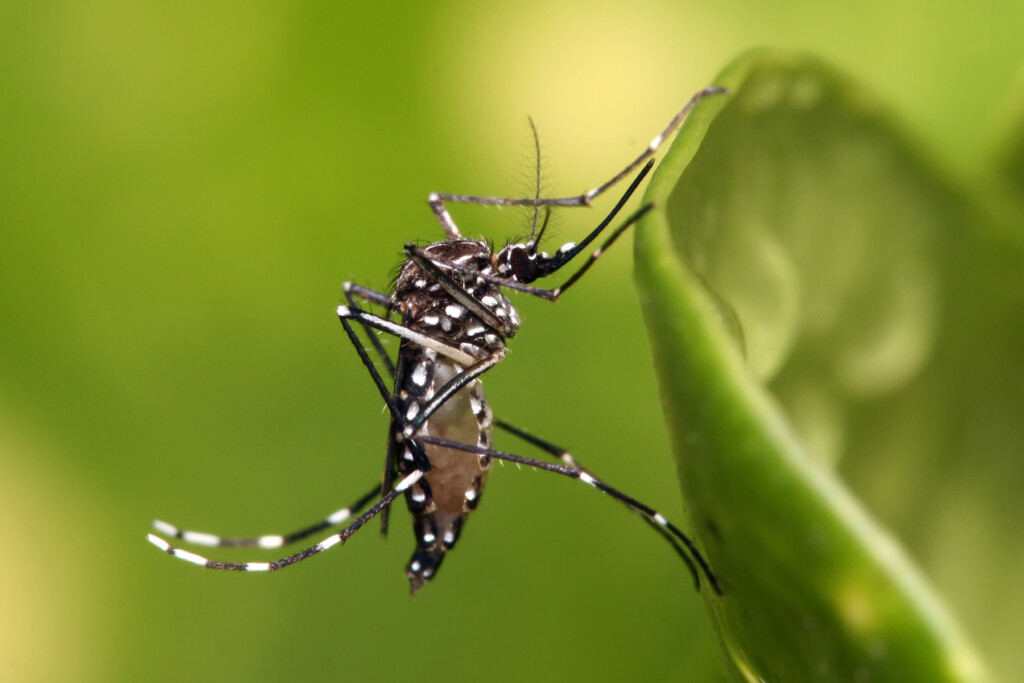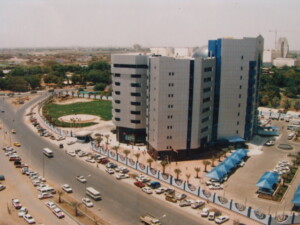Malaria, dengue, typhoid spread as mosquitos multiply in Sudan capital

Aedes aegypti mosquito (File photo: Muhammad Mahdi Karim / GNU Free Documentation License)
The Khartoum Bahri Emergency Room announced the deterioration of the health situation in the locality during the month of August, as it monitored thousands of suspected cases of epidemic diseases under conditions of war, displacement and disruption of water and sanitation services, which provided a fertile environment for the spread of waterborne diseases and mosquitoes. The Minister of Health, Dr Haitham Ibrahim, revealed an unprecedented outbreak of mosquitoes that carry dengue fever and malaria in Sudan. He confirmed that the density of Aedes aegypti mosquitoes reached 30 per cent, while only five per cent was enough to cause an epidemic explosion.
The Bahri Emergency Room report recorded more than 2,100 cases of malaria, the largest share of which were in Al-Shabaab (893 cases), Danaqala (318 cases), and Hilla Khojaly (350 cases), with a heavy spread of mosquitoes observed in the south and east of Bahri.
In addition, 1,177 cases of typhoid linked to the contamination of water sources were detected, in addition to a significant increase in dengue fever, especially in Kobar (400 cases) and Al-Shaabi (265 cases), while watery diarrhoea reached 260 cases, mainly distributed between Cooper (170 cases) and United Villages (53 cases). The report indicated that the risk of cholera remains with the onset of the autumn season and the contamination of drinking water.
The emergency room confirmed that Mid Bahri represents a large gap in health follow-up due to the absence of official reports, although field indicators show that the situation is similar to what is happening in the south of the locality.
Health authorities have predicted that the region will see a significant increase in infections over the next six to eight weeks if urgent mosquito control and water disinfection campaigns are not implemented, with strong waves of typhoid and watery diarrhoea possible.
The Bahri Emergency Room called for the implementation of spraying campaigns and distributing mosquito nets, sterilising drinking water sources, cleaning neighborhoods of stagnant water and waste, in addition to activating the early warning system and equipping health centers with essential medicines. It also called for an urgent meeting of the Ministry of Health and international organisations such as the World Health Organisation, UNICEF and Médecins Sans Frontières (MSF) to provide urgent support to the region.
Malaria and dengue outbreaks in East Nile
East Nile Emergency Room said East Nile locality is witnessing a serious deterioration in the health situation, with the widespread spread of malaria and dengue fever in most areas of the locality, which poses a direct threat to the lives of citizens, especially children, women and the most vulnerable groups.
The Chamber pointed out that most health facilities suffer from a severe shortage of medicines and medical aids and their high prices.
The chamber warned of the lack of analgesic intravenous solutions such as pendulum bands and other essential medicines needed to treat emergency cases and confront the widespread diseases.
The East Nile Emergency Room warned of the worsening health crisis, calling on the authorities, competent authorities and humanitarian organisations to intensify efforts in preventive spraying and distributing mosquito nets to limit the spread of disease vectors, and to intervene urgently and immediately to provide medicines and aids, and contain the outbreak of diseases before it turns into a large-scale health disaster.
Dengue and malaria infection rates are increasing in most localities of Khartoum and Omdurman, with complaints of widespread outbreaks of mosquitoes and disease vectors.
Minister of Health: Aedes aegypti mosquito density rises to 30% – dengue fever outbreak despite spraying campaigns
The Minister of Health, Dr Haitham Ibrahim, revealed an unprecedented outbreak of mosquitoes that carry dengue fever and malaria in Sudan. He confirmed that the density of Aedes aegypti mosquitoes reached 30 per cent, while only five per cent was enough to cause an epidemic explosion.
In an interview with the Emaar program on Sudan TV on Saturday evening, the minister explained that this increase has not been witnessed in the country, pointing out that spraying with pesticides does not work much because mosquitoes are active during the day in closed houses and their larvae multiply in broken vehicles and rubble, while spraying with planes remains very limited.
He pointed out that dengue fever, although it does not record high deaths, causes high morbidity and affects the entire family, pointing out that there are four types of dengue fever in Sudan. The minister called for the removal of rubble and community participation, to reduce the breeding of mosquitoes, while intensifying campaigns in all axes, especially home inspection of larvae.
$11 billion in health sector losses
In the health sector file, the minister confirmed that the actual assessment of the losses of health institutions did not deviate much from the previous estimates of $11 billion. He explained that most of the health buildings were partially destroyed, while a few were completely destroyed, while the most expensive medical devices and equipment were the most expensive. The sector was also directly attacked on 500 health institutions, and more than 120 health workers were lost in the line of duty.
He pointed out that the cost of the return of citizens to Khartoum state has risen from $400 million to $1.2 billion now, explaining that Khartoum has suffered more damage than other states due to the long presence of the Rapid Support Forces there. In Darfur, he said, many health institutions have been destroyed, although exact details are lacking.
The minister pointed out that the looting of medicines and medical supplies has led to a shortage of between $300 million and $500 million, and that only three of the 26 pharmaceutical factories are in service in Khartoum, while seven other factories are expected to enter service by the end of the year. He added that the percentage of the abundance of medicines has improved to reach 75 per cent according to the latest reports, compared to 42 per cent in 2023, despite the sector’s debt of $70 million.
The minister stressed that the World Health Organisation (WHO) has expressed its desire to document Sudan’s experience in the resilience of the health system during the war, noting that the war imposed a decentralised system that contributed to the continuation of the sector’s work despite the difficult circumstances. He explained that his ministry has developed a package of measures to benefit from the health cadres available in the states, with the training of specialists and the retention of 1,000 specialists in the states
He also pointed to future projects to increase the production of medicines and medical supplies, including the establishment of gauze and cotton factories in Blue Nile, scorpion serums in the north, and intravenous solutions in White Nile, which will enhance Sudan’s ability to dispense with imports and improve the availability of medical supplies











 and then
and then